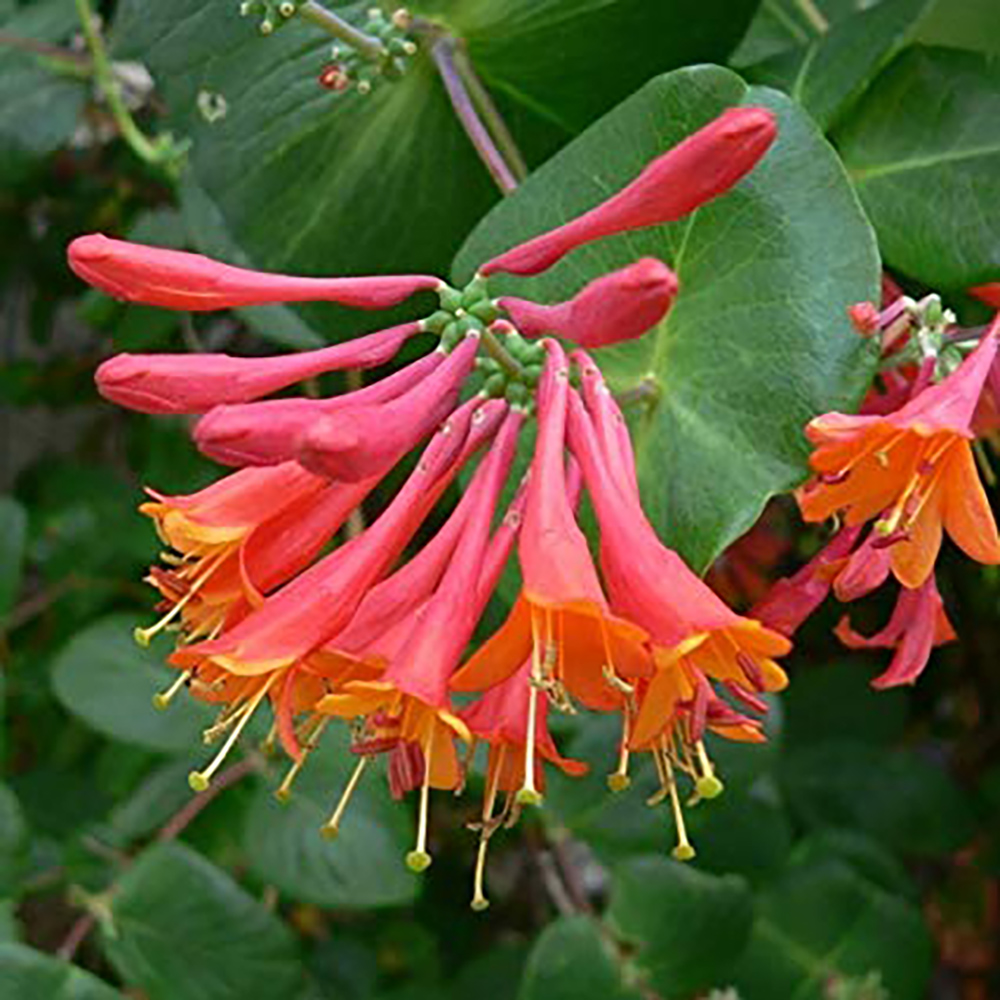Space Invaders of the Garden Kind
By Tammy Thornton

After spending a weekend reclaiming an overgrown part of our backyard, it’s time to talk about invasive plants. Years of neglect and fear of poison ivy had made a prime piece of my garden unusable. But this week, my dear husband boldly attacked the plot, poison ivy and all. This gave us a new-found space for a raised garden bed. I see zucchini as well as Benadryl and calamine lotion in our future.
Besides the poison ivy, two of the main culprits of this overgrown mess were honeysuckle vine and English ivy. Honeysuckle has a lovely scent, attracts hummingbirds and butterflies, and children love to suck the sweet nectar out of its flowers. But beware. It wraps itself around everything in its path, sending runners that root everywhere. If you don’t keep it in check, it will take over your garden. Instead of giving up on this popular climber, try the native, non-invasive, coral honeysuckle vine (lonicera sempervirens), which will also attract butterflies and hummingbirds with its beautiful tubular flowers.
Most beginner gardeners have made the rookie mistake of planting something in their backyard that they couldn’t resist at the garden nursery. Years later, they wish they’d never heard of trumpet vine, wisteria, or English ivy. Ask anyone that has bamboo in their yard and you’ll get an earful from one that regrets the mistakes of their youth.
Another common way of introducing plants to your garden is through plant swapping. Exchanging surpluses of flowers with friends can be great fun. But research the plant they are offering you. Normally, if a gardener is giving away plants from their garden, it’s something that will be spreading in yours. This can be wonderful since large swathes of color make a better impact than one or two flowers. But be prepared to discipline a wandering newcomer to your garden.

Years ago, I brought home a centerpiece from a party that had lemon balm in it. I was so happy to plant this lemony-smelling herb in my garden. Now I have it coming out of my ears. It’s popping up everywhere. Had I done a quick search, I would have realized lemon balm is part of the mint family, which is known for spreading like crazy. Any mint will quickly take over a small space. If you’d like to grow mint, keep it in a container. And quickly pull out any volunteers that spring up outside your pot. Keeping aggressive growers in check is like sin. You have to deal with it early and often or it will take over and bring others down with it.
Some eligible plants for trading from my garden are bee balm, ferns, and rose of Sharon. Though I love each of these, they multiply like bunnies and need thinned out almost yearly. Bee balm grows profusely, but its red flowers attract hummingbirds, so I give it much freedom.
Recently, my friend gave me rose campion and yarrow. As suspected, both of these plants grow prolifically, but they are also beauties. So I happily added them to my garden, knowing I will have to keep my eye on them in years to come.
A little research now can prevent big headaches later. Read about plants before you give them a home in your garden, and heed the warnings of friends. Weigh the work of keeping an invasive plant under control versus its benefit to you. Keep known space invaders in pots to limit their range. And if they have worn out their welcome, offer them to a friend. English ivy anyone?
Tammy Thornton is a mom of four, a substitute teacher, and a Sunday school teacher. She is passionate about gardening and cooking, and loves the beach.





